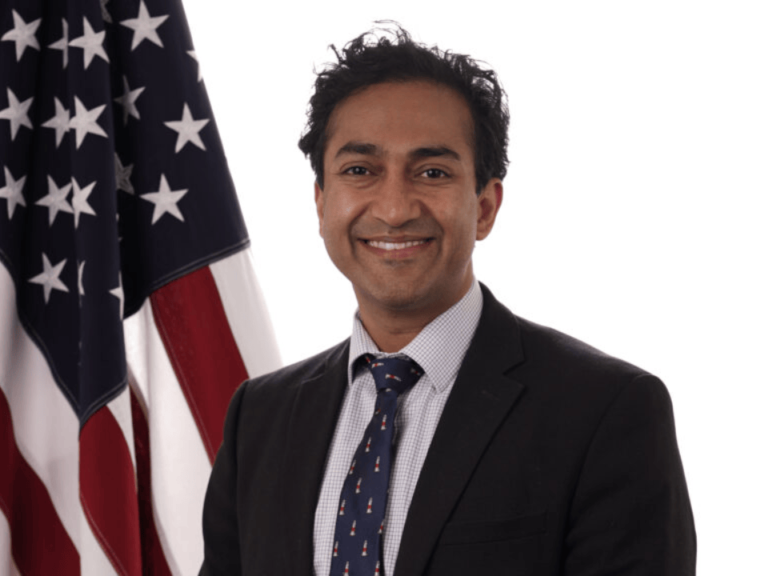The Friends of Cancer Research annual meeting, to be held Nov. 4 in Washington, DC, will focus on three questions facing the field of oncology clinical trial design:
- How do clinical researchers create seamless trial designs for drug development in rare cancers?
- What are the considerations for clinical trial design testing combination drug development?
- How can clinical researchers address variability in standards of care in multi-regional clinical trials?
Friends of Cancer Research released its white papers to go along with each of these topics on Oct. 28.
These topics represent the modern wave of challenges facing clinical researchers and regulators. These questions have been the subject of regulatory conversations. In one form or another, these issues have appeared before the FDA Oncologic Drug Advisory Committee and have been touched on in multiple draft guidances.
For instance, FDA in September 2024 issued a draft guidance that details the agency’s current thinking around the management of the challenges of multi-regional clinical trials. The guidance provides regulatory insight on the allocation of enrolled patients, site selection, and the navigation of regional differences in disease characteristics, standard of care, and drug availability.
The agency has not yet released final guidance on multi-regional clinical trials.
In May, Genentech Inc.’s Supplemental Biologics License Application for glofitamab (Columvi) injection was brought before ODAC due to FDA’s concerns about disparate clinical trial results between participants enrolled in Asia, compared to those enrolled in non-Asian regions, compounded by the fact that an insufficient number of U.S. patients were enrolled.
These two factors left the agency unsure about whether the trial’s findings were generalizable to patients in the U.S. Forty eight percent of clinical trial participants were enrolled in Asian countries, with the largest group of patients enrolled in the People’s Republic of China.
Genentech’s application was for the indication of patients with relapsed or refractory diffuse large B-cell lymphoma, not otherwise specified, who are not candidates for autologous stem cell transplant and was submitted in combination with gemcitabine and oxaliplatin.
ODAC ultimately voted 8:1 recommending against the approval of glofitamab (The Cancer Letter, May 23, 2025).
FDA also put out a draft guidance on July 16 on how to conduct combination drug trials investigating two or more drugs used in a single regimen. This guidance was last updated in 2013. Combination drug trials are studies in which at least one of the drugs is not yet approved or FDA-approved for a different indication. The draft guidance offers regulatory guidance on how to demonstrate the contribution of effect of each drug.
The Friends annual meeting aims to be a space to discuss these challenges and find ways to overcome them.
“This meeting has become a collaborative forum to tackle pressing issues in drug development and regulation,” Jeff Allen, president and CEO of Friends of Cancer Research, said in a statement. “Each meeting report lays out actionable strategies to guide future trial designs and development programs. Bringing leading experts together to work through current challenges builds the evidence and consensus needed to shape future policy.”
Rare cancers
Due to small population sizes and slow enrollment, clinical advances take longer in rare cancers.
The Friends white paper on clinical trial design in rare cancers, “Seamless Clinical Trial Designs in Rare Cancers: Leveraging Operational and Adaptive Strategies to Accelerate Drug Development,” focuses on improving ways to increase the speed of clinical discovery for rare cancers, primarily through seamless trial designs.
Seamless trials are designed to be adaptive across development phases. They combine multiple trial stages into a single protocol.
“Seamless clinical trials build on common early-phase approaches—such as dose escalation and cohort expansion—by more thoughtfully integrating multiple development stages, including dosage optimization and efficacy evaluation, within a single framework,” the white paper reads. “This approach can reduce downtime between phases, maximize learning from each patient, and allow adaptive modifications to the trial based on emerging data.”
According to Friends, the upcoming session at the annual meeting will aim to examine how to best design seamless trials so that they are both “scientifically rigorous and operationally viable.”
Speakers at the meeting will also discuss what types of data can support regulatory decisionmaking in the absence of a control arm, and how thoughtful endpoint selection and design flexibility might help reduce patient burden while maintaining confidence in trial results.
“Seamless trial designs can streamline rare cancer drug development by integrating multiple phases into a single, continuous framework,” Bernat Navarro, science policy analyst at Friends of Cancer Research said to The Cancer Letter. “This approach ensures that every
patient contributes meaningfully to evidence generation and helps accelerate access while maintaining scientific rigor and regulatory oversight.”
Despite these advantages, seamless trial designs remain underutilized in rare cancer drug development, Friends said.
Friends gathered stakeholders from FDA, NCI, pharmaceutical companies, academia, and patient advocacy groups. The working group analyzed three case studies of seamless clinical trials, including:
- FIGHT-101 trial, evaluating pemigatinib, a selective FGFR inhibitor, in patients with advanced solid tumors.
- ARROW trial, evaluating pralsetinib, a RET tyrosine kinase inhibitor, in RET fusion-positive non-small cell lung cancer.
- RINGSIDE, evaluating AL102, a γ-secretase inhibitor, in patients with desmoid tumors, a rare and locally aggressive fibroblastic neoplasm.
The report concludes that when pursuing a seamless trial, sponsors can “optimize scarce patient resources, maintain statistical validity, and meet regulatory expectations.”
The paper also explores patient engagement, pediatric considerations, how to balance pre-specification and flexibility, and endpoint selection.
Combination drug development
Drugs in oncology are increasingly provided in combination, which require demonstration of the contribution of effect for each drug to support drug development and regulatory approval.
This process can be challenging to implement due to resource and timing constraints, according to Friends.
The Friends meeting will focus on how to efficiently adapt trial designs and provide robust evidence for each agent’s contribution of effect, which statistical methods best isolate treatment effects, and how regulatory expectations could evolve to improve clarity and consistency in evaluating combination therapies.
Friends convened a working group for this topic composed of academics, regulatory officials, and pharmaceutical industry representatives, to explore the challenges of combination drug trials and determine what evidence is needed to demonstrate contribution of effect. The working group put out a paper titled, “Assessing Contribution of Effect (COE) in Oncology Combination Therapies: Lessons Learned to Inform and Optimize Future Registrational Trial Designs,” as a result of its work.
“Understanding the contribution of effect is critical to ensure that every drug in a combination therapy adds meaningful benefit to patients without unnecessary toxicity,” Hillary Andrews, director of regulatory and research partnerships at Friends of Cancer Research, said in a statement. “As oncology drug development accelerates, robust yet flexible approaches to evaluating COE help balance innovation with patient safety and scientific rigor.”
The working group analyzed drug trials of combination therapies targeting:
- Anti-PD-(L)1 + anti-CTLA-4, including several arms of the CHECKMATE and SWOGS trials.
- BRAF and MEK inhibitors, including arms of the COMBI, BRF, COLOMBUS, BEACON, BREAKWATER and CDR trials.
The paper also explores alternative trials designs that may be able to provide sufficient evidence of contribution of effect.
Multi-regional clinical trials
Friends will also present the findings from the white paper focused on multi-regional clinical trials, titled “Multi-Regional Clinical Trials: Addressing Standard of Care Variability.”
“Evolving standards of care and variability in treatment availability across regions make global oncology trials increasingly difficult to design and interpret,” Mark Stewart, vice president of science policy at Friends of Cancer Research, said to The Cancer Letter. “Tackling this challenge is key to ensuring results remain credible and meaningful for patients.
“Building practical frameworks for comparator selection and trial design will be critical to sustaining global feasibility and scientific rigor.”
Multi-regional trails are a powerful way to accelerate global development and improve the generalizability of clinical trial results, Stewart said. But they come with distinct challenges.
“But comparator selection, deciding what the control arm should be is one of the most difficult aspects of MRCT design,” Stewart said. “The challenge stems from the fact that standards of care can vary widely across regions and those differences can come from time differences and regulatory approvals, variation in clinical guidelines, real world practice patterns, reimbursement, and access.”
As a result, these types of studies run the risk of producing results that are difficult to interpret and incompatible with FDA regulatory standards. Ultimately, this delays patient access to promising new therapies, Stewart said.
Other types of cross-regional challenges are differences in genetic ancestral background, exposure to environmental hazards, access to health care, and cultural differences like diet and spiritual beliefs.
The paper explores how trial design can best balance scientific rigor, patient relevance, and global feasibility.
“There is no one-size-fits-all approach, which is why comparator selection has become such a persistent and pressing issue for multi-regional clinical trials,” said Stewart.










